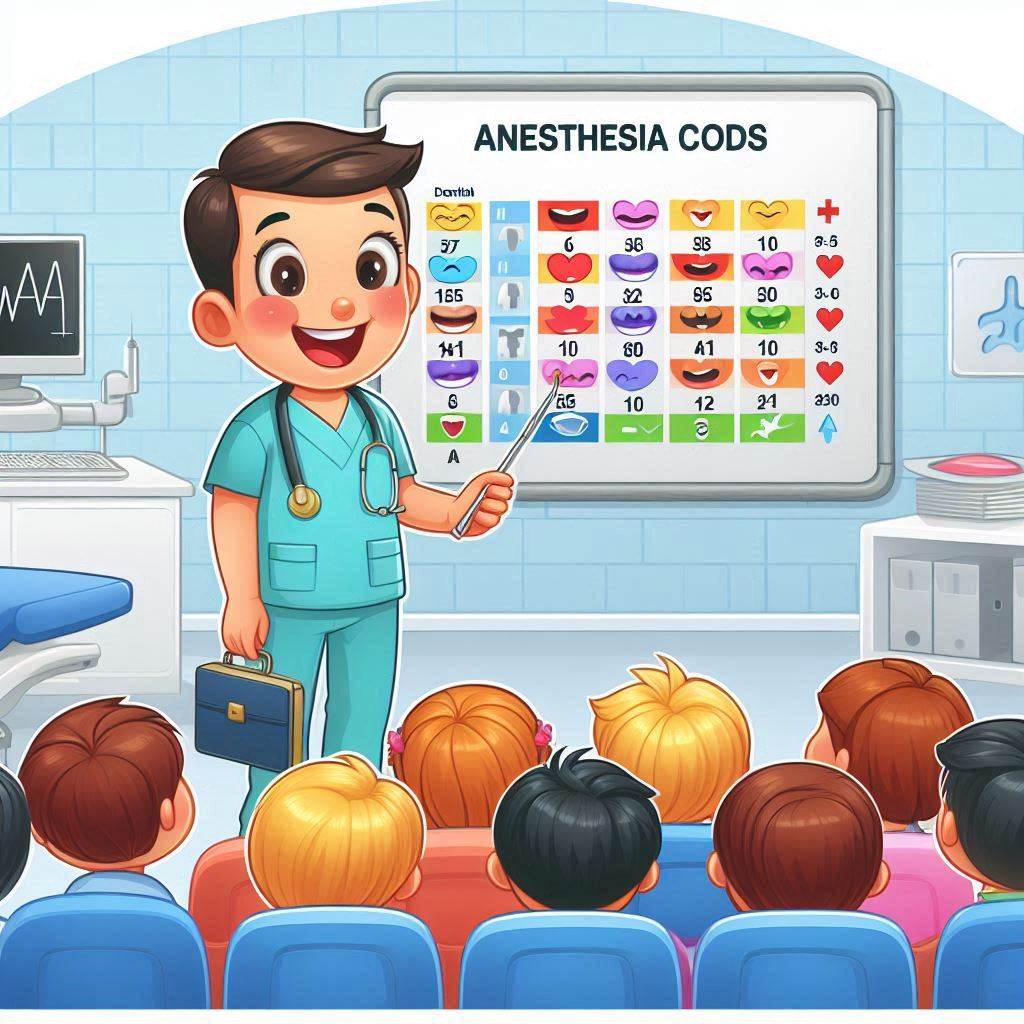Anesthesia Coding for Dental Procedures
Anesthesia plays a crucial role in dentistry, ensuring patient comfort during invasive or complex procedures. However, coding for dental anesthesia can be complex due to overlapping medical and dental billing systems, varying payer policies, and frequent updates to coding guidelines.
This comprehensive guide explores anesthesia coding for dental procedures, covering CPT and ICD-10 codes, reimbursement challenges, and best practices for accurate billing. Whether you’re a dentist, anesthesiologist, or medical coder, this article provides valuable insights to optimize coding efficiency and compliance.

2. Understanding Anesthesia in Dentistry
Types of Dental Anesthesia
Dental anesthesia can be categorized into:
- Local Anesthesia (e.g., lidocaine injections)
- Conscious Sedation (oral or IV sedation)
- General Anesthesia (for complex surgeries)
When is Anesthesia Required?
Anesthesia is typically used for:
- Surgical extractions (e.g., impacted wisdom teeth)
- Implant placements
- Extensive periodontal surgeries
- Pediatric patients with dental anxiety
3. Anesthesia Coding Basics
CPT Codes for Dental Anesthesia
Commonly used CPT codes include:
| CPT Code | Description |
|---|---|
| 00170 | Anesthesia for procedures on facial bones (e.g., jaw surgery) |
| 00172 | Anesthesia for dental procedures (e.g., extractions) |
| 00176 | Anesthesia for reconstructive jaw surgery |
| 99152 | Moderate sedation (first 15 minutes) |
ICD-10 Codes for Dental Procedures
Relevant ICD-10 codes include:
- K08.1 – Loss of teeth due to trauma or extraction
- K04.7 – Periapical abscess requiring drainage
- Z01.20 – Encounter for dental examination
4. Common Dental Procedures Requiring Anesthesia
Extractions and Oral Surgery
- Simple Extraction (D7140) – Local anesthesia usually suffices.
- Surgical Extraction (D7210) – May require sedation or general anesthesia.
Root Canals and Endodontics
- D3310 (Anterior Root Canal) – Often uses local anesthesia.
- D3348 (Retreatment of Root Canal) – May require sedation.
Pediatric Dental Procedures
- D9222 (Deep Sedation) – Used for young or anxious patients.
5. Coding Challenges and Solutions
Bundling and Unbundling Issues
Some payers bundle anesthesia with the primary procedure. Using Modifier -23 (Unusual Anesthesia) can help in justified cases.
Modifiers in Dental Anesthesia Coding
- -AA (Anesthesia by anesthesiologist)
- -AD (Medical supervision by dentist)
6. Insurance and Reimbursement Considerations
Medical vs. Dental Insurance Billing
- Medical Insurance may cover anesthesia for medically necessary procedures (e.g., jaw reconstruction).
- Dental Insurance typically covers anesthesia for standard dental surgeries.
Documentation Requirements
- Pre-operative notes justifying anesthesia
- Duration and type of anesthesia administered
7. Best Practices for Accurate Coding
- Regularly review ADA and AMA coding updates.
- Conduct internal audits to ensure compliance.
- Train staff on modifier usage and payer policies.
8. Case Studies and Examples
Case Study 1:
- Procedure: Wisdom tooth extraction under general anesthesia.
- Codes Used: CPT 00172 + ICD-10 K01.1 (Impacted tooth).
Case Study 2:
- Procedure: Pediatric dental filling with sedation.
- Codes Used: D9248 (IV sedation) + ICD-10 F41.9 (Anxiety disorder).
9. Conclusion
Proper anesthesia coding in dentistry ensures accurate billing and compliance. Understanding CPT/ICD-10 codes, payer policies, and documentation best practices is essential. Regular training and audits help prevent claim denials and maximize reimbursements.
10. FAQs
Q1: Can dental anesthesia be billed to medical insurance?
A: Yes, if the procedure is medically necessary (e.g., jaw reconstruction).
Q2: What modifier is used for anesthesia provided by a dentist?
A: Modifier -AD indicates medical supervision by a dentist.
Q3: How often do dental anesthesia codes change?
A: CPT codes are updated annually; always check the latest ADA/AMA guidelines.
11. Additional Resources
- American Dental Association (ADA) – www.ada.org
- American Society of Anesthesiologists (ASA) – www.asahq.org
- CMS Anesthesia Billing Guidelines – www.cms.gov


